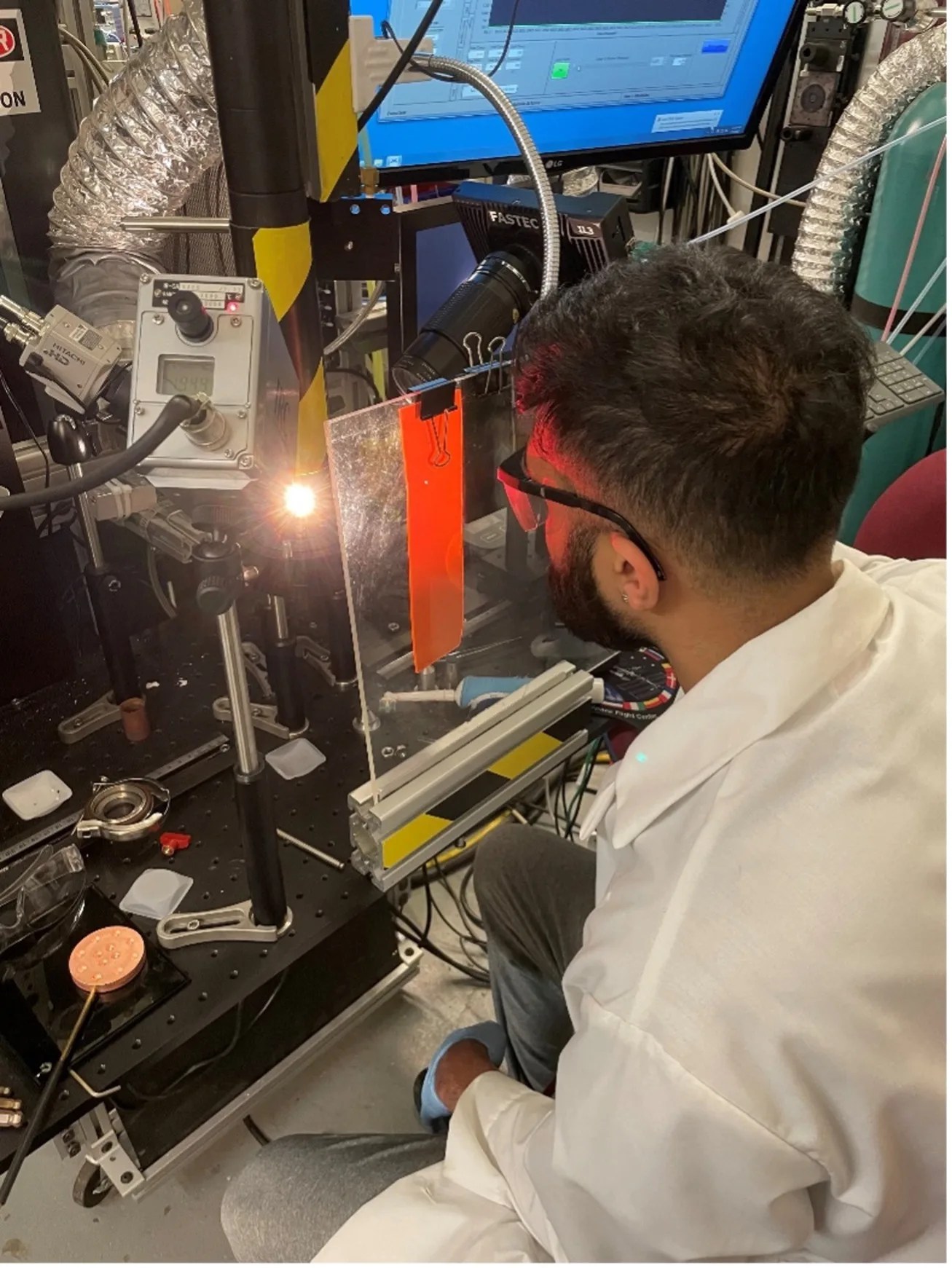Microgravity Investigation of Thermophysical Properties of Supercooled Molten Metal Oxides (ELF 5/Superglass)
Science Objectives
The Microgravity Investigation of Thermophysical Properties of Supercooled Molten Metal Oxides (Superglass) uses the JAXA Electrostatic Levitation Furnace (ELF) on the International Space Station (ISS) to measure the density, thermal expansion coefficient, viscosity and surface tension of supercooled liquids (liquids below their normal melting point) over a wide range of temperatures and compositions. Supercooled liquids and glasses are non-equilibrium materials that are essential for production of displays (e.g. cell phones), industrial and medical lasers, optics, and glass products for automobiles and aerospace applications. Understanding how different liquids can form glass underpins development of new and higher performance materials. Understanding how molten materials can be processed in microgravity is a key part of developing new transformational products in space and enabling development of habitats in space and on other planets.
Status
Returning on SpaceX-25.
Experiment Description
The Microgravity Investigation of Thermophysical Properties of Supercooled Molten Metal Oxides uses prototypical metal oxide systems based on aluminate, silicate and titanate binaries to develop the basis for understanding the interplay between thermophysical properties, atomic structure and the properties of products made both in microgravity and on earth. Metal oxides (soil and rock) are abundant in space and learning how to use them for space-based manufacturing is essential to NASA’s goals of thriving in deep space. Molten metal oxides are also key to Earth-based functional glass products for a wide variety of applications. The outcome of this international research collaboration between the Japan Aerospace Exploration Agency (JAXA) and NASA includes: (1) accurate measurements of important thermophysical properties - density, thermal expansion coefficient, viscosity, and surface tension - for molten metal oxides, (2) a greater understanding of the science underlying processing of molten metal oxides, the glass transition and glass production both on earth and in space.
Space Applications
Long term human exploration of space requires utilization of local resources including the soil and rocks present on lunar and other bases and recycled materials from the flight hardware. Understanding how to process materials in reduced gravity is a critical underpinning of future space missions. Additionally, the development of methods to produce food, water, and oxygen measurements of thermophysical properties of prototype materials are an essential step towards establishing sustainable space-based habitats.
Earth Applications
The data from the space flight research provides new understanding about how to optimize glass processing and properties made on Earth. The data helps to improve the performance and lower the cost of materials that are used in the production of displays (e.g. cell phones), industrial and medical lasers, optics, and glass products for automobiles and aerospace applications.
Team
- Principle Investigator: Richard Weber, Founder and President of Materials Development, Inc.
- Stephen Wilke, R&D Scientist at Materials Development, Inc.
- Vrishank Menon, research Assistant at Materials Development, Inc.
- Jared Rafferty, Controls Engineer at Materials Development, Inc.
- Emma Clark, Materials Development, Inc.
- Dr. Robert Hyers, Consultant and Professor at the University of Massachusetts, Amherst, MA, United States
The Materials Development, Inc. (MDI) researchers are strongly supported by a team at NASA who help to manage the project and provide ground-based resources. A team at JAXA screens samples before flight and operates the ELF instrument on the space station in collaboration with the U.S. investigators. Post-flight sample analysis includes measurements at the Advanced Photon Source, Argonne National Laboratory, the Spallation Neutron Source, Oak Ridge National Laboratory, and the Materials of the Universe Research Center at Arizona State University.































